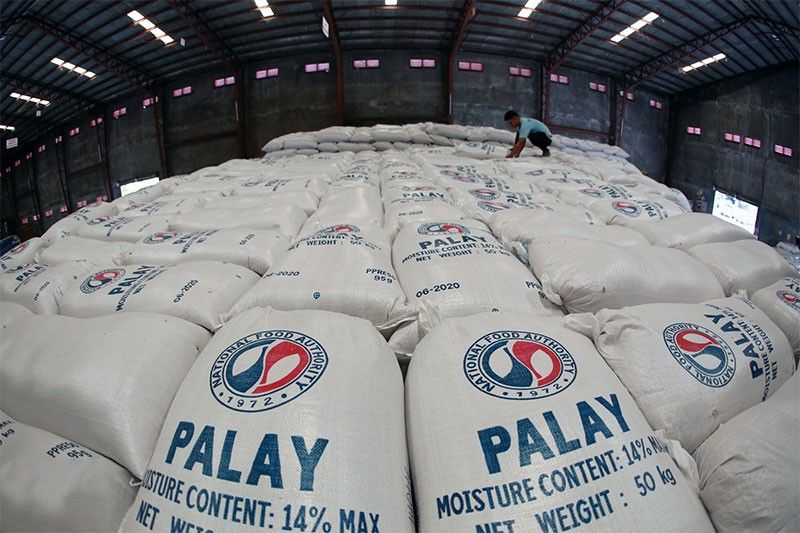MANILA, Philippines — The country’s palay production in the second quarter likely tumbled by 8.4 percent to 3.9 million metric tons (MT) as farms reeled from the ill effects of the dryer weather conditions.
In its latest production forecast, the Philippine Statistics Authority (PSA) said that palay or unmilled rice harvest from April to June likely declined to 3.89 million MT, 360,000 MT lower than the actual 4.25 million MT output in the same period last year.

Workers arrange sacks of National Food Authority (NFA) palay or unmilled rice inside their warehouse in Balagtas, Bulacan on May 22, 2024.
Furthermore, the PSA’s new estimate for the second quarter was lower than its earlier forecast of 3.91 million MT palay output.
The national statistics agency’s latest production outlook is based on the standing crops nationwide as of May 1.
The PSA noted that the estimated palay harvest area during the reference period contracted by 7.12 percent year-on-year to 892,400 hectares from 960,870 hectares.
More so, the PSA said there is an expected drop in the average yield of palay to about 4.39 MT per hectare in the second quarter from 4.42 MT per hectare a year ago.
“As of May 1, 2024, about 568,030 hectares or 63.7 percent of the 892,400 hectares updated harvest area of standing crop have been harvested. This translates to palay output of 2.54 million metric tons,” the PSA said.
“Of the total area of 324,370 hectares of standing palay yet to be harvested as of May 1, 2024, 38.6 percent were at the reproductive stage and 61.4 percent were at the maturing stage,” it said.
Industry groups attributed the projected decline in palay production to the impact of the El Niño phenomenon on farms, especially since the dryer than usual weather conditions peaked in the second quarter.
“We don’t have water irrigation from our dams. We were told Pantabangan Dam will not be operational this season due to lack of water,” said Danilo Fausto, president of the Philippine Chamber of Agriculture and Food Inc.
“It’s difficult to rely on rain water for rice planting. Others who can afford it were forced to spend on irrigation pumps. Others will not be planting,” Fausto said.
Raul Montemayor of the Federation of Free Farmers said some farmers opted to plant early in anticipation of the dry spell. As a result, more farmers harvested in the first quarter, contributing to the decline in the second quarter output.
In a related development, the country’s total rice stocks as of May 1 expanded by 10 percent year-on-year to 2.075 million MT on the back of bigger commercial inventory driven by higher imports.
Latest PSA report showed that the nationwide rice inventory was 193,000 MT higher than the 1.882 million MT recorded stocks in the same month of last year. On a monthly basis, total rice stocks grew by almost 12 percent from 1.856 million MT recorded in April.
“This month’s rice stocks inventories registered an annual increase from the commercial sector by 45.0 percent,” the PSA said.
“On the other hand, annual decreases were noted from the NFA (National Food Authority) depositories by 30.7 percent and from the households by 13.1 percent,” the PSA said.
Rice stocks in commercial entities during the reference period reached 1.142 million MT versus the 787,970 MT recorded inventory last year. Commercial rice stocks accounted for more than half of the nationwide inventory of the staple.
Meanwhile, rice inventory in households and NFA warehouses reached 863,770 MT and 69,350 MT, respectively.





